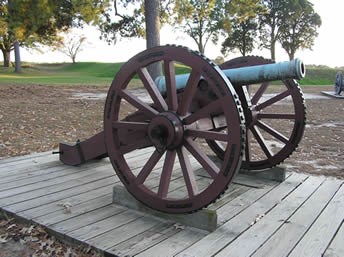
Cannon, mortars and howitzers made up the three types of artillery used at Yorktown by the Americans, French and British. Cannon included both field guns, which were lightweight, mobile pieces and heavy siege guns which had limited mobility. Field guns, firing solid shot, grapeshot and canister in a fairly flat trajectory, could tear large holes in the enemy’s infantry ranks. Siege cannon fired solid shot, destroying fortifications and buildings. Against ships, cannon crews utilized hot shot, a superheated cannon ball that could set a ship on fire; and bar shot and chain shot, (two halves of a cannon ball attached by either a bar or chain) that could pull down a ship’s mast and rigging. 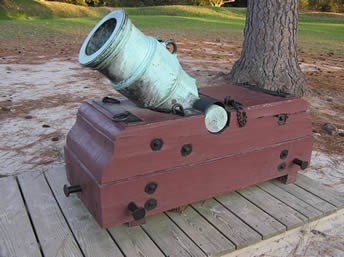
Mortars differed from cannon in both appearance and firing principles. A mortar was mounted on a flat bed, resembling a large block of wood. An elevating wedge raised the barrel, enabling the mortar to fire an exploding shell, called a "bomb," in a high trajectory. Fired properly, the bomb would fly over earthworks and explode while still airborne, raining shrapnel over the enemy
The howitzer combined the principles of both the cannon and the mortar. Mounted on a field carriage, the howitzer fired both bombs and cannon balls at a flat or high trajectory. 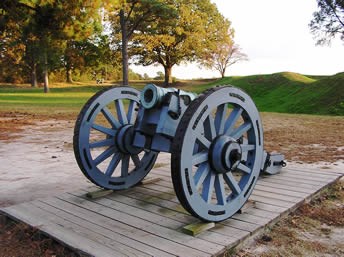
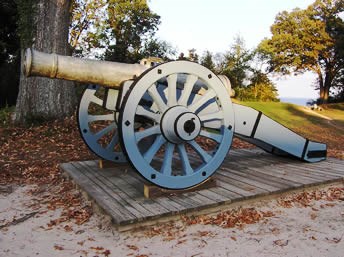
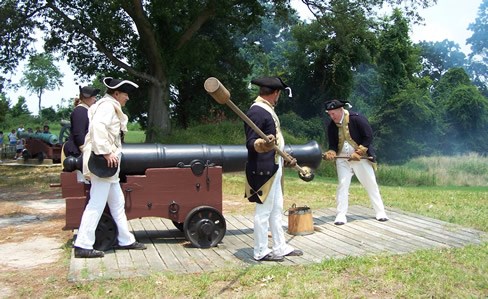
Artillery Ranges The exact firing ranges of the artillery pieces at Yorktown are difficult to determine. Factors such as piece size, amount of powder charge and quality of the powder affected the range. The following are rough averages: Maximum Range Effective Range CANNON 2,000 yards 1,000 yards MORTARS 1,400 yards 750 yards HOWITZER 1,300 yards 750 yards The difference between maximum and effective range, and the difficulty in determining ranges, demonstrates the nature of artillery in the American Revolution. Artillery was not an exact science, so the skill and experience of the gun crew often determined the success of the artillery. |
Last updated: February 26, 2015
